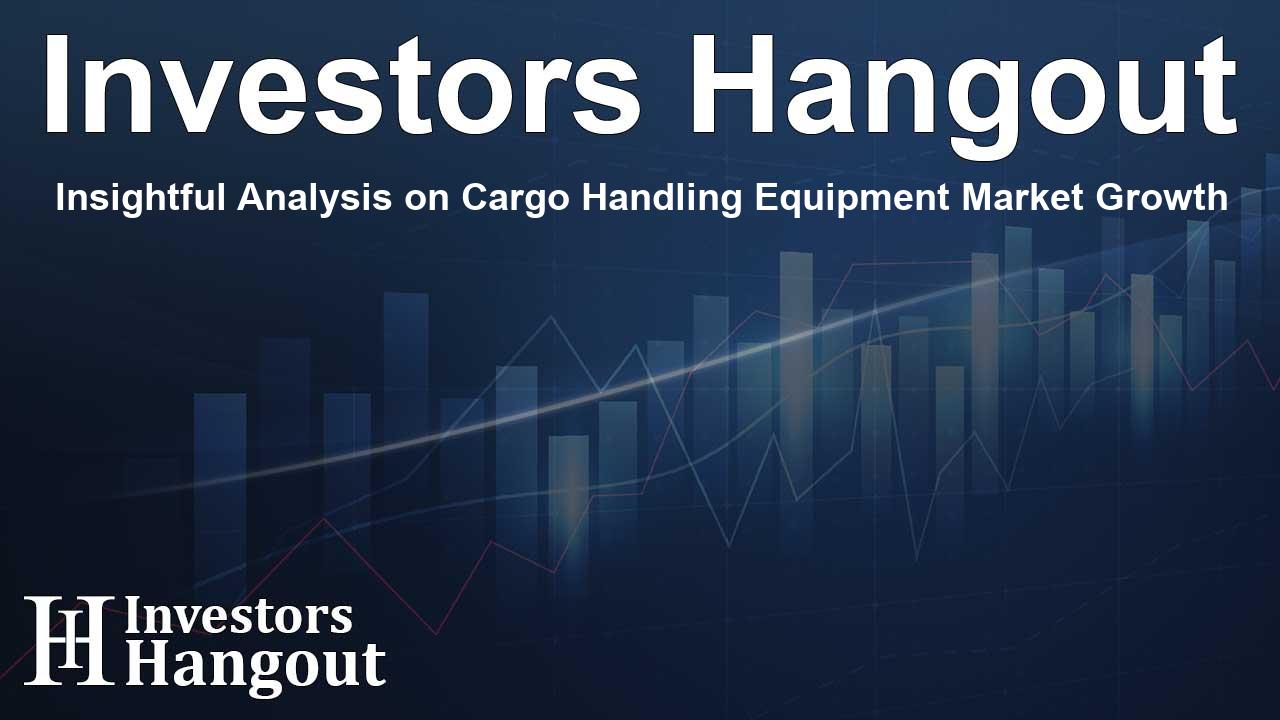Insightful Analysis on Cargo Handling Equipment Market Growth

Understanding the Cargo Handling Equipment Market
The Cargo Handling Equipment Market is on an exciting trajectory as it anticipates significant growth over the coming years. Experts suggest that with the international trade landscape continuing to evolve, the demand for efficient cargo handling solutions is growing. Innovators and industry players are investing in advanced technologies which enhance operational effectiveness and sustainability.
Market Overview and Future Projections
The latest research from Custom Market Insights indicates that the global cargo handling equipment market size was approximately USD 27.33 billion recently. Projections show it could reach USD 29.14 billion shortly. However, the most exciting forecast places the market value at around USD 50.21 billion by the year 2034, marking a compound annual growth rate (CAGR) of approximately 4.8% that spans from now to the future.
Factors Influencing Market Growth
Several factors are driving this upward trend in the cargo handling equipment market. Key among them is the surge in international trade and commerce, increased adoption of automation and robotics, as well as the rising demand for energy-efficient practices. These transformations contribute to the efficiency of distribution networks and logistics operations worldwide.
Technology and Innovation in Cargo Handling
As industries adapt to a rapidly changing environment, automation has emerged as a critical element enhancing service delivery in cargo machinery management. Automated Guided Vehicles (AGVs), advanced AI systems, and robotic solutions have started to dominate cargo-handling processes. Organizations leveraging these technologies benefit from reduced labor costs, increased productivity, and diminished error rates. Importantly, this shift leads not only to faster processing speeds but also to enhanced safety in logistics operations.
Sustainability Trends in Equipment Manufacturing
In response to growing environmental concerns, the market has pivoted towards developing sustainable and eco-friendly equipment. As regulation surrounding emissions becomes more stringent, there is a decisive shift towards electric and hybrid-powered machinery. Companies that prioritize green technologies are not only gaining a competitive edge but also contributing significantly to reducing their ecological footprints.
Challenges Facing the Industry
Despite this optimistic outlook, several hurdles could impede growth. The substantial capital investment needed for adopting advanced solutions remains a primary obstacle, particularly for small to medium-sized enterprises. Additionally, an ongoing shortage of skilled labor capable of operating complex automated systems adds another layer of complexity. Hence, overcoming these challenges requires strategic planning and investment in workforce education and infrastructure enhancement.
Regional Insights Into Market Dynamics
The cargo handling equipment market is segmented across various regions, each exhibiting unique trends and conditions. North America leads the charge with significant investments in port modernization and automation technologies. Meanwhile, Europe is focusing on technological innovation, aligning closely with sustainability goals posed by regulatory frameworks like the EU’s Green Deal.
Emerging Markets and Their Potential
Conversely, the Asia-Pacific region is expected to experience rapid growth due to its dominant position in manufacturing and trade, particularly with countries like China and India. Nations within this region are making substantial investments to expand their port infrastructures and improve efficiency in cargo handling, fostering demand for diverse types of equipment.
Conclusion and Future Outlook
The outlook for the cargo handling equipment market remains promising. With evolving technologies, global trade dynamics, and increasing pressure towards sustainability, the industry is poised for transformative growth. Stakeholders and businesses must stay informed and adaptable to thrive in this competitive environment. Understanding these trends will empower companies to leverage opportunities effectively as the market continues to evolve.
Frequently Asked Questions
What is the expected growth rate of the Cargo Handling Equipment market?
The Cargo Handling Equipment market is projected to grow at a CAGR of 4.8% and reach around USD 50.21 billion by the year 2034.
What factors are driving the growth of this market?
The growth is driven primarily by the expansion of international trade, advancements in automation and robotics, the demand for sustainable solutions, and significant investments in port infrastructure.
How does automation impact the cargo handling industry?
Automation plays a pivotal role by enhancing efficiency, reducing labor costs, and improving accuracy in cargo handling operations through the implementation of technologies like AGVs and robotic solutions.
What challenges does the cargo handling equipment industry face?
The sector faces challenges such as high capital investment, a shortage of skilled labor, and regulatory pressures regarding environmental compliance that can hinder adoption and growth.
Which regions are leading in market growth for cargo handling equipment?
North America and Europe are currently leaders due to their extensive investment in port modernization and sustainability efforts. The Asia-Pacific region is expected to exhibit rapid growth due to its significant manufacturing capabilities.
About The Author
Contact Henry Turner privately here. Or send an email with ATTN: Henry Turner as the subject to contact@investorshangout.com.
About Investors Hangout
Investors Hangout is a leading online stock forum for financial discussion and learning, offering a wide range of free tools and resources. It draws in traders of all levels, who exchange market knowledge, investigate trading tactics, and keep an eye on industry developments in real time. Featuring financial articles, stock message boards, quotes, charts, company profiles, and live news updates. Through cooperative learning and a wealth of informational resources, it helps users from novices creating their first portfolios to experts honing their techniques. Join Investors Hangout today: https://investorshangout.com/
The content of this article is based on factual, publicly available information and does not represent legal, financial, or investment advice. Investors Hangout does not offer financial advice, and the author is not a licensed financial advisor. Consult a qualified advisor before making any financial or investment decisions based on this article. This article should not be considered advice to purchase, sell, or hold any securities or other investments. If any of the material provided here is inaccurate, please contact us for corrections.
